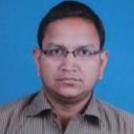
Pankaj Kumar Mishra
Work place: Department of Biomedical Engineering and Bioinformatics, University Teaching Department, Chhattisgarh Swami Vivekanand Technical University, Bhilai, Chhattisgarh, India
E-mail: pmishra1974@yahoo.co.in
Website: https://orcid.org/0000-0003-0129-2570
Research Interests:
Biography
Pankaj Kumar Mishra is professor at Biomedical Engineering and Bio informatics, UTD, Chhattisgarh Swami Vivekanand Technical University, Bhilai. His qualifications are Ph.D., M. Tech and B. Tech. He has 25 years of teaching experience and his areas of interest include navigation data processing, navigation and control, integrated navigation systems. A total number of research publications are 30.
Author Articles
Design of an Efficient UNet-Based Transfer Learning Model for Enhancing Skin Cancer Segmentation and Classification Performance
By Namrata Verma Pankaj Kumar Mishra
DOI: https://doi.org/10.5815/ijigsp.2025.02.05, Pub. Date: 8 Apr. 2025
Accurate and efficient segmentation and classification are indispensable for the early diagnosis and treatment of skin cancer, a common and potentially fatal condition. Combining the UNet architecture with Auto Encoders for robust skin cancer segmentation, followed by binary cascade Convolutional Neural Networks (CNNs). In this text, we present a novel method for accurately classifying melanoma and basal cell carcinoma. Existing models are limited in their ability to achieve high precision, accuracy, and recall rates while maintaining a high Peak Signal-to-Noise Ratio (PSNR) for accurate image reconstruction, which necessitates this research. Our proposed model overcomes these limitations and performs exceptionally well on datasets: ISIC, HAM10000, PH2 Dataset, and Dermofit Image Libraries. When UNet and Auto Encoders are used, the advantages of both architectures are combined. The UNet architecture, renowned for its superior performance in image segmentation tasks, provides a solid foundation for separating skin cancer regions from surrounding tissue. The Auto Encoder component simultaneously facilitates feature extraction and image reconstruction, leading to improved representation learning and segmentation results. Utilizing the complementary capabilities of these models, our method improves the accuracy and efficiency of skin cancer segmentations. Using binary cascade CNNs for classification also improves our model's performance. The binary cascade architecture employs a hierarchical classification method that iteratively improves classification choices at each stage. This facilitates the differentiation between basal cell carcinoma, melanoma, and melanocytic nevi, resulting in highly accurate and trustworthy predictions. Extensive experiments were conducted on the ISIC, HAM10000, PH2 Dataset, and Dermofit Image Library to evaluate the performance of our proposed model. The achieved precision of 99.2%, accuracy of 98.3%, recall of 98.9%, and PSNR greater than 42dB demonstrate the superior functionality and effectiveness of our strategy. These results suggest that our model has a great deal of potential for assisting dermatologists in the early identification and classification of skin cancer, ultimately leading to improved patient outcomes. The combination of UNet with Auto Encoders and binary cascade CNNs has proven effective for segmenting and classifying skin cancer. Our proposed model outperforms current methods in terms of precision, accuracy, recall, and PSNR, demonstrating its potential to have a significant impact on the field of dermatology and aid in the early detection and treatment of skin cancers.
[...] Read more.Other Articles
Subscribe to receive issue release notifications and newsletters from MECS Press journals